In the footsteps of trade fair architecture
PAVILION 10
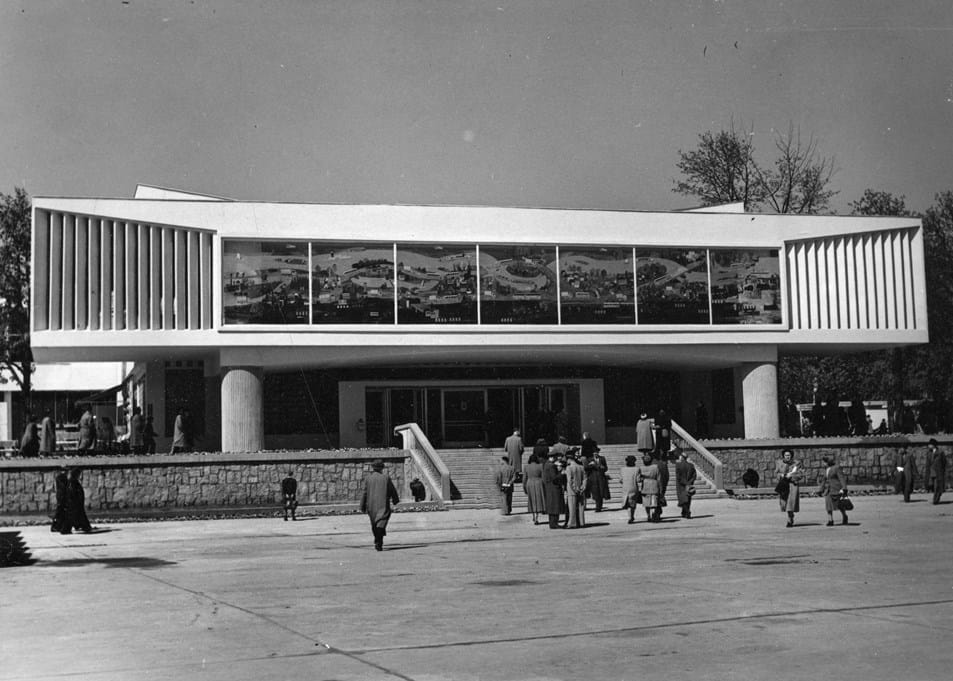
Author of the design: arch. Bolesław Szmidt
Year of construction: 1949
This is the first pavilion built after World War II and the first permanent modernist facility on the MTP grounds (usually modernist and avant-garde pavilions from the times of the General National Exhibition were temporary). It was built on the site of the former cemetery, closing the frontage of St. Mark. It was designed by Bolesław Szmidt, then the chief fair architect. The building was distinguished by its original front elevation, which, thanks to the shutters on the sides, gave the impression of the depth of the television window. Thanks to the extension of the upper tier and supporting it on supports, the body has gained lightness. Good layout and proportions of the pavilion resulted in the fact that for many years it was considered a model of functionality and good architectural solutions. The interior is illuminated in an interesting way through the domes placed in the ceiling.Details and interior design were the work of the artists Szynkowski and Jezierski. According to the architects, the building defends itself with the freshness of its form to this day. There are fountains on the sides of the stairs in front of the entrance to the building. Currently, greenery has been planted in their place - conifers and other plants.
The building was commissioned by the Ministry of Transport, which presented its exhibition there for the first time in 1949. At that time, the building was visited by President Bolesław Bierut and Prime Minister Józef Cyrankiewicz.
In 1955, when the Chinese appeared at the Poznań International Fair for the first time, they completely changed the building, installing decorations on the front elevation, which gave it a completely different, oriental character. They repeated the procedure a year later, adding two lions at the entrance to the building. They even erected a Mao Tse-Tung monument inside the building.
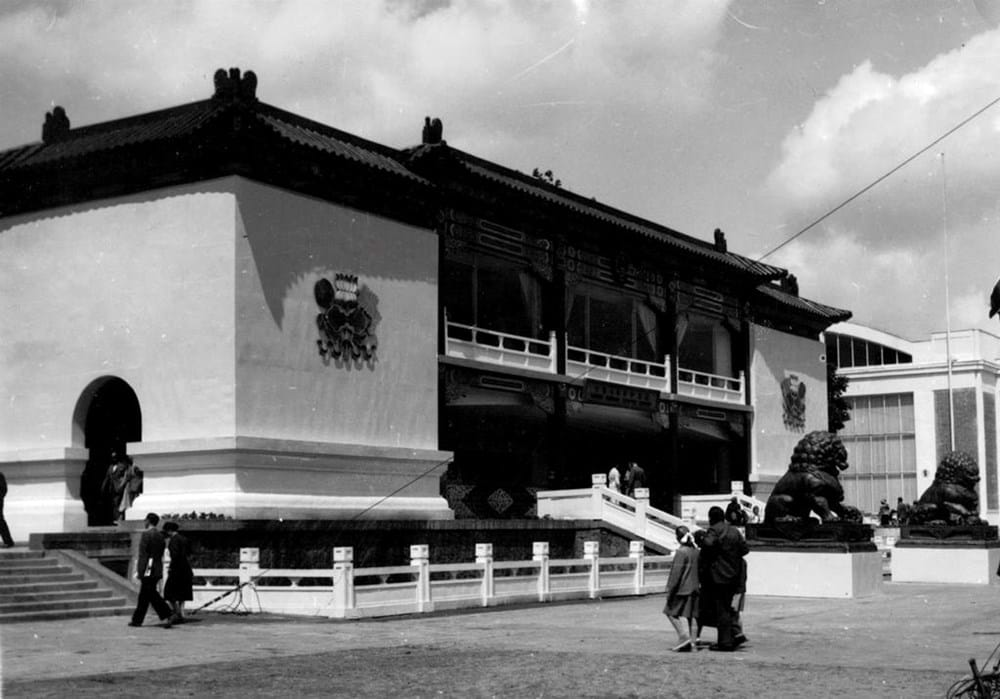
For years, there has been a "UNIVERSAL" neon sign at the top of the building. Since 2009, it has been operating as the MTP Press Center. Press conferences, ceremonial events, meetings and exhibitions are held on the ground floor, while offices and a specially separated space for journalists are located on the first floor.
PAVILION 4
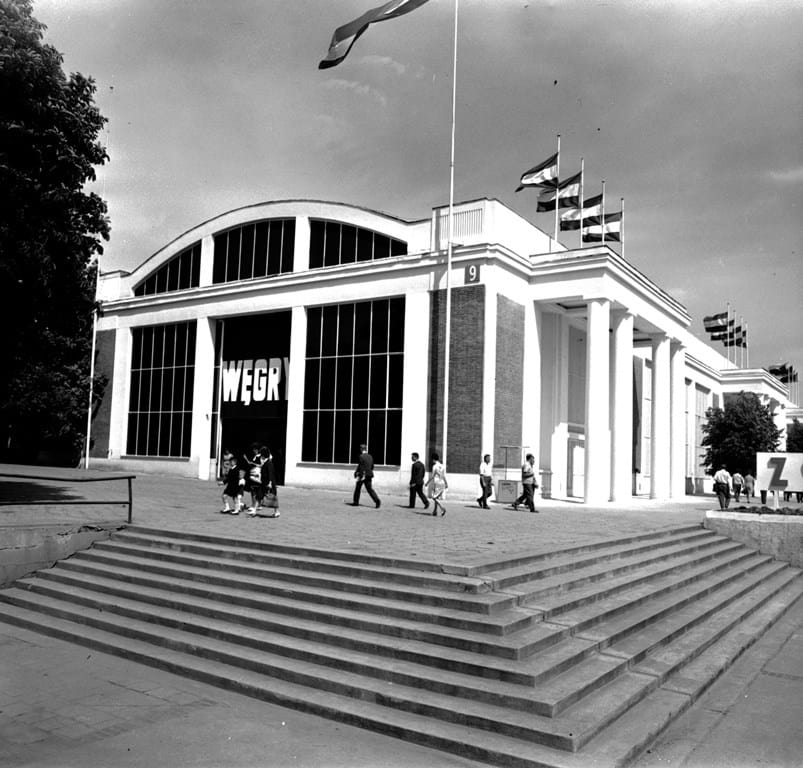
Author of the design: arch. Bolesław Szmidt
Year of construction: 1954-1955
The impressive building with an exhibition area of 5,000 m2 is kept in the pure style of classicist socialist realism, the only one of such a convention at the fair. It was built by Miastoprojekt Stolica - Przedsiębiorstwo Projektowe Budownictwa Miejskiego Warsaw. Side projections and porticoes with columns are strongly emphasized in it. The hall has two aisles in a reinforced concrete structure with an arched roof made of ceramic hollow bricks reinforced with steel ties. The solution was chosen not for architectural reasons, but mainly for prosaic reasons - due to the short deadline and limited financial possibilities. The building was erected in a market park, delimiting the western frontage of Mark's Square.
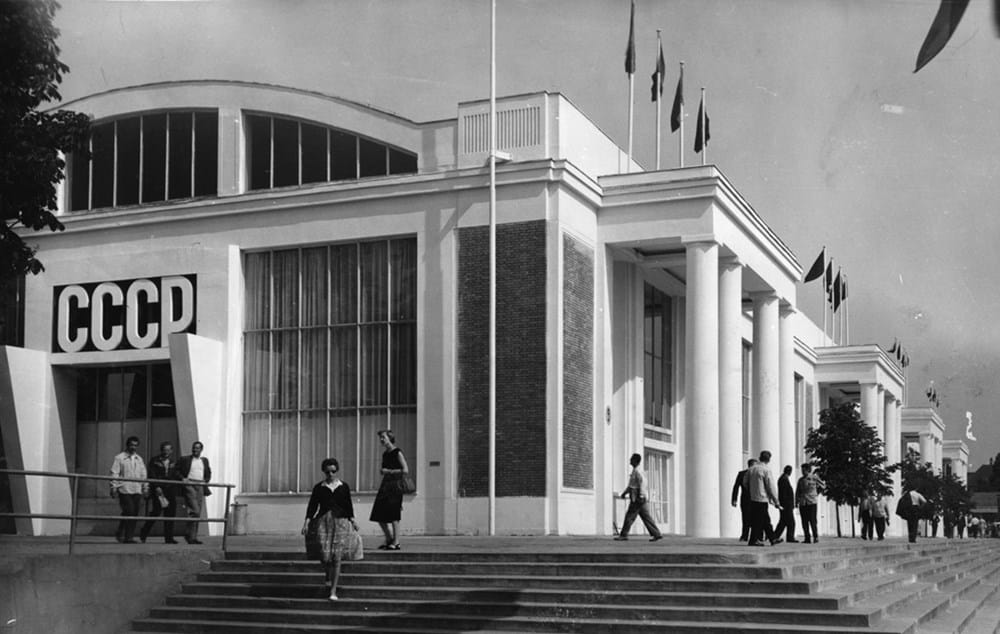
It was one of the pavilions for the 24th Poznań International Fair, the first after a five-year break in 1951-1954, caused by the Cold War. It then served as an exhibition hall for the German Democratic Republic. In the following years it was visited by Czechoslovakians, Hungarians and - even before they took over Pavilion 17 in 1962 - exhibitors from the Soviet Union.
In 2000, the pavilion underwent modernization, as part of which connectors were added to it with pavilions 3A and 5.
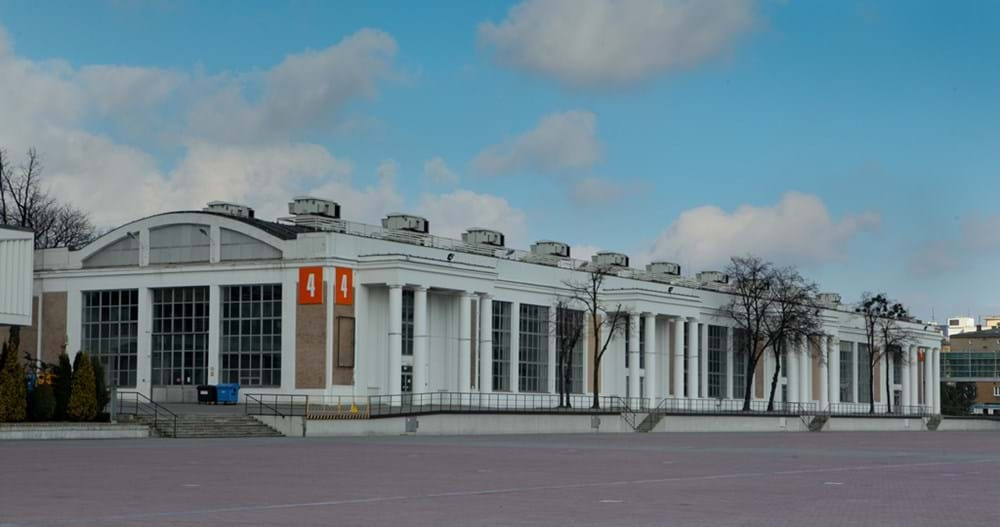
MARKA SQUARE
(St. Mark's Square or Central Square)
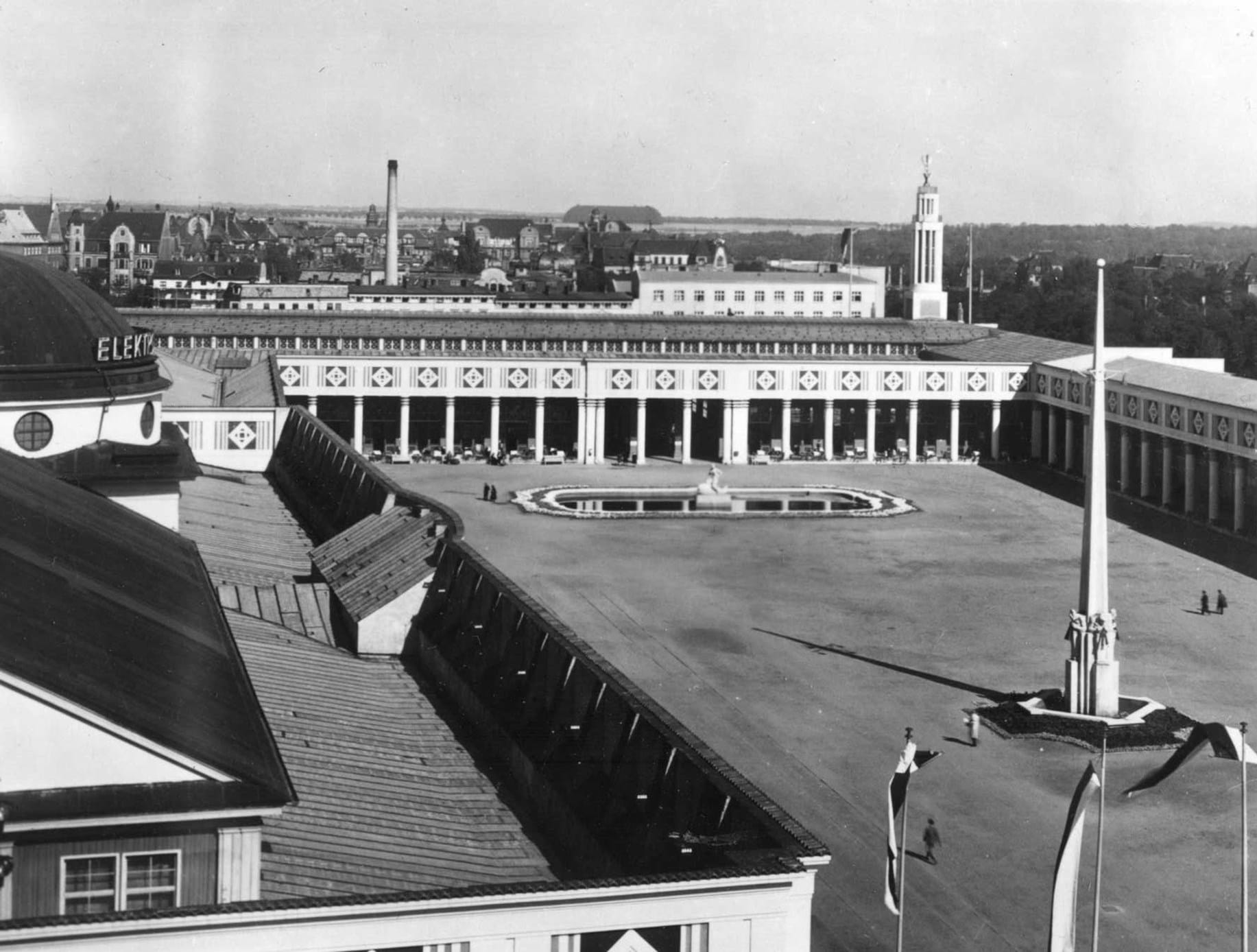
Author of the design: arch. Roger Sławski
Year of construction: 1929
It was built for the General National Exhibition in 1929. It is a vast courtyard north of the Upper Silesian Tower, from which you could get to ten pavilions. It owes its name to the resemblance to the most famous square in Venice - St. Mark. All thanks to the impressive arcades with columns that surrounded it from three sides of the world: west, north and east. The columns had gilded capitals and a decorative frieze stretched between them. Although the modern architecture of the pavilions adjacent to the square has changed its historical character, strongly associated with Pewuka, the name is still used today.
The square was situated next to the façade of the new, brick Central Hall and the previously existing, wooden Hall of Machines, designed by Kazimierz Ruciński in 1923, the architect of which added a colonnade, the same as that decorated the Central Hall. The square was 270 meters long and 80 meters wide. There are two fountains on it: the act with Marcin Rożek's dolphin in the middle of the pond and a tall soaring obelisk by Adolf Berezowski and Jan Goliński with figures of four fauns holding pipes from which water was gushing.
Interestingly, Roger Sławski planned the construction of a second, twin square, which was to be located at the Heavy Industry Hall. Its walls - depending on the version - were to form colonnades or arcades. Both squares were to be joined by the Upper Silesian Tower, where the Spire stands today.
Mark Square is the largest open space at the Poznań International Fair with great potential. It enables both the presentation of a wide variety of machines and devices, as well as the possibility of organizing other events. For example, in 2006, the world premiere of Roger Waters' opera Ca Ira took place. At that time, three stages were installed in the square, including one with two levels, and the audience was prepared for 14,000 spectators. A year later, Shinead O'Connor performed here. In 2009, Nine Inch Nails and Jane's Addiction performed at Mark's Square as part of the Malta International Theater Festival. The square also serves as a car park for fair events.
PAVILION 3A - Vestibule,
Representative Pavilion
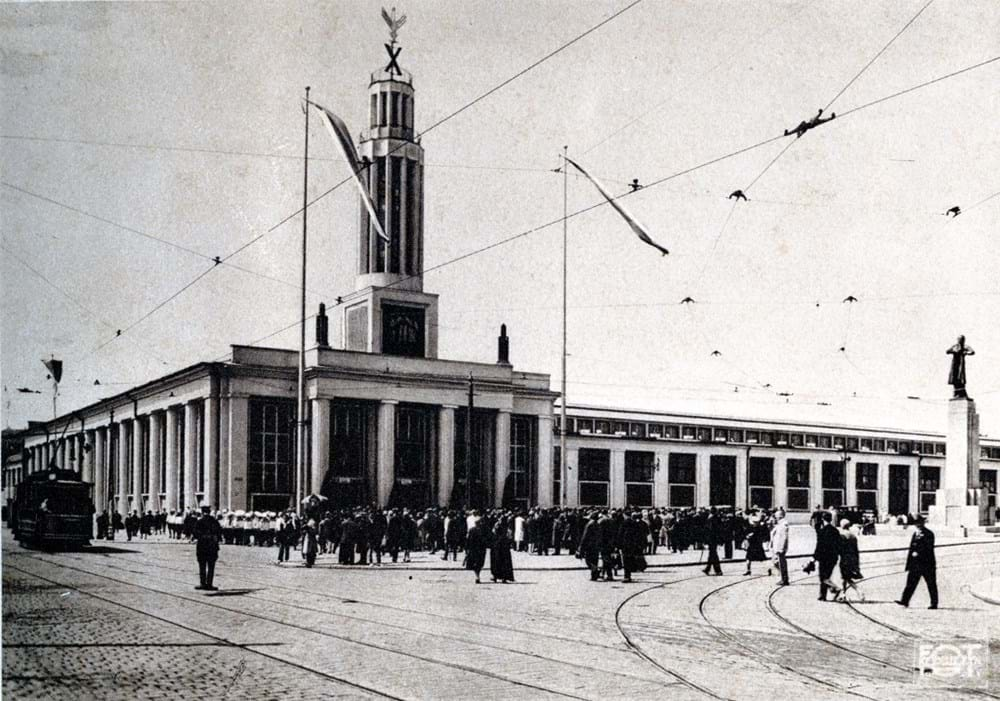
Author of the design: arch. Roger Sławski
Year of construction: 1928-1929
The vestibule is a symbolic building built for the General National Exhibition as a representative entrance to the fairgrounds. The building with a characteristic 35-meter reinforced concrete turret, topped with an art deco eagle and a neon sign with the Roman number X, symbolizing the 10th anniversary of Poland regaining independence. The richly decorated facade was distinguished by a Doric portico and painted allegories depicting Industry, Agriculture and Trade, as well as the scene of the unification of the Polish lands after the partitions. In front of the building there were 20-meter steel flagpoles. Inside, there were concert, congress and representative halls. The interior of the Vestibule was decorated with splendor: there were numerous decorations and stained glass windows, furniture made of noble wood species, lawns and vases with greenery were introduced.Elegant chandeliers and lanterns hung on ornate ceilings, and sconces on the walls. Rest areas and special annexes lined with carpets have been separated.
It was here that on May 16, 1929, the official opening ceremony of Pewuka took place, during which President Ignacy Mościcki cut the white and red ribbon with scissors and released a white postal pigeon from his hand, opening the largest exhibition ever organized in our country. It occupied an area three times larger than the present fairgrounds. It stretched from the intersection of Bukowska and Głogowska streets to Kasprowicz Park. At that time, the vestibule was decorated with an organ from the Biernacki Brothers factory in Włocławek, played by Feliks Nowowiejski, an outstanding Polish composer and conductor, creator of the "Triumphal Hymn", written especially for this occasion.
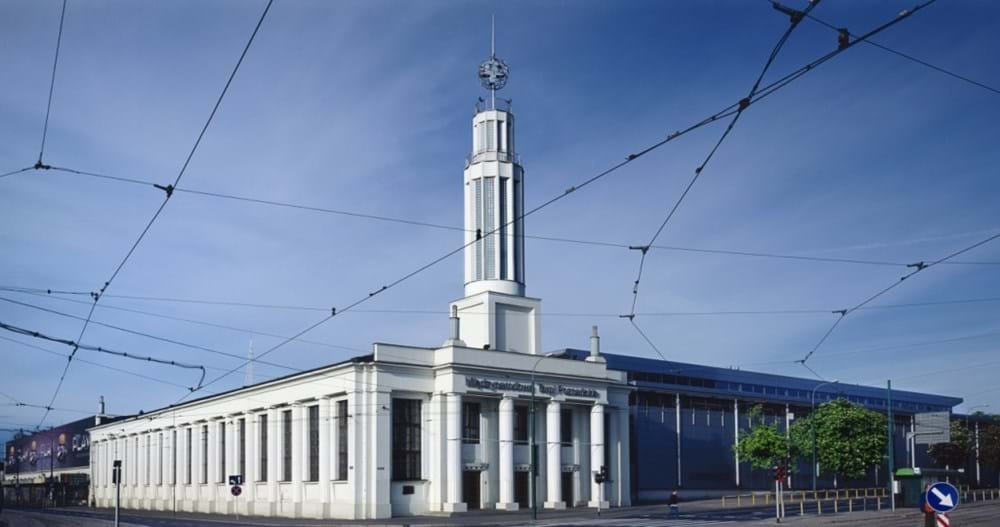
The new part of the exhibition pavilion 3A, designed by Studio ADS, was built in 1999 in the place of the demolished pavilion 8a and part of the former St. Mark. The building is connected with pavilion no. 3 and - through a connector - with pavilion no. 4. During the renovation works, the original lanterns, bas-reliefs and the light illumination of the tower and the entire facility were reconstructed in the historic part.
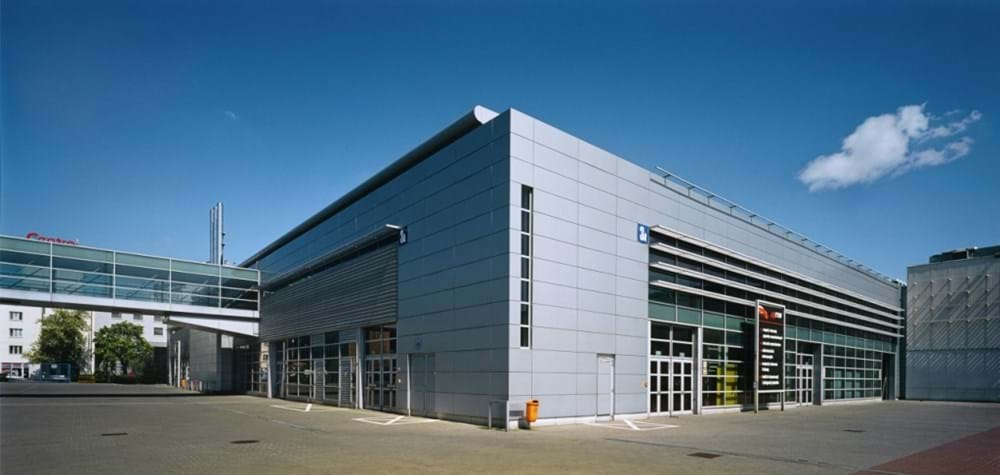
PAVILION 6
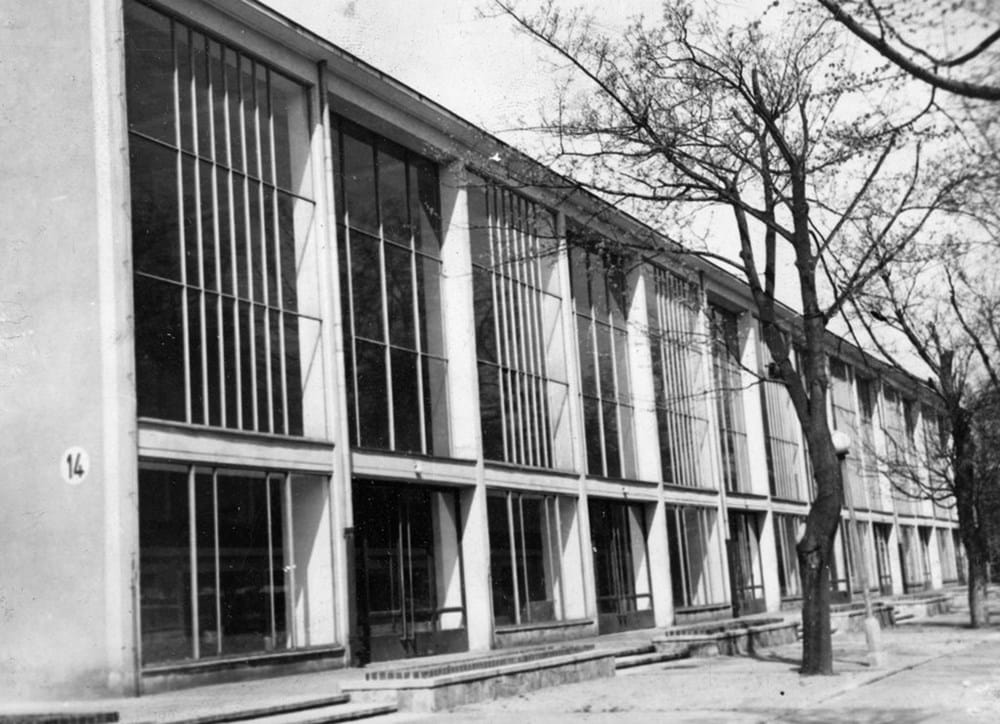
Author of the project: reconstruction and extension of ADS Studio.Construction
year: 1956-1957, reconstruction and extension 2008
Pavilion 6 was built in 1957 and its designers were architects Henryk Jarosz, Jerzy Liśniewicz and Jan Wellenger. The hall was made as a reinforced concrete structure, partially prefabricated and - what is unique in the case of fair architecture - with a basement. The glass wall on the side of the fair park provided it with good natural light. Over the years, it served as a pavilion for the German Democratic Republic. The current shape is the result of the extension in 2008. The added part was given the number 6A. It was designed by ADS Studio. The facility was connected with the largest MTP exhibition pavilion - Hall 5 with special multi-functional ground connectors.
Previously, there were two modernist and innovative pavilions designed by architect Józef Jędrzejczak. The first was the Pavilion No. 17, opened in 1961. It was distinguished by an interesting shape - with fully glazed side walls with a movable structure, which allowed entry and exit of all kinds of large exhibits, and a hanging roof, which, however, caused many problems in winter. During heavy rainfall, snow accumulated and it was necessary to plow it off manually. But the hall itself compensated for these inconveniences. Thanks to movable walls, it made it possible to display large-size devices and machines. From 1962, the pavilion was permanently assigned to the Soviet Union.
Next to it, there was Pavilion No. 15, a market skyscraper, put into use in 1962. It had seven storeys, but they were shifted by mezzanines, as a result of which it had 11 independent mezzanines. In terms of the exhibition, however, it was extremely inconvenient - the low load-bearing capacity of the ceilings allowed only small exhibits. Workers' cooperatives and other "small" exhibitors exhibited here most often. At its top there was a cafe with a terrace overlooking the fairgrounds and the city.
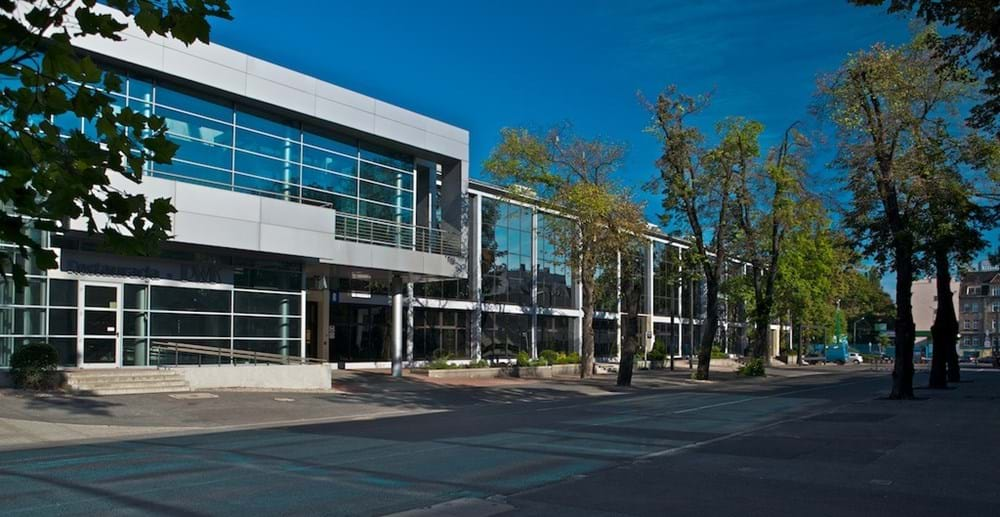
Another modernist building stood nearby - pavilion No. 13, the so-called "Umbrella" from 1958, designed by Jerzy Staniszkis, with a characteristic fabric roof.
"FOUR PACK"
Project author: reconstruction and modernization ADS Studio
Year of construction: reconstruction and modernization 2008
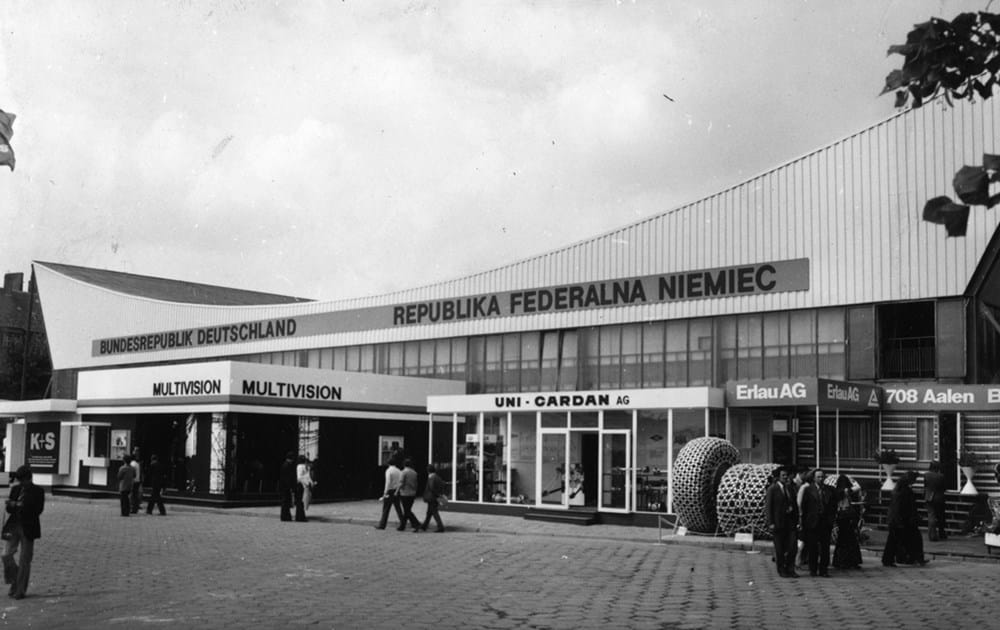
This place shows a fundamental change in the shaping of exhibition facilities over the years, from single small pavilions to multi-segment buildings, connected with each other, with an emphasis on functionality, not architectural form, or innovative construction solutions.
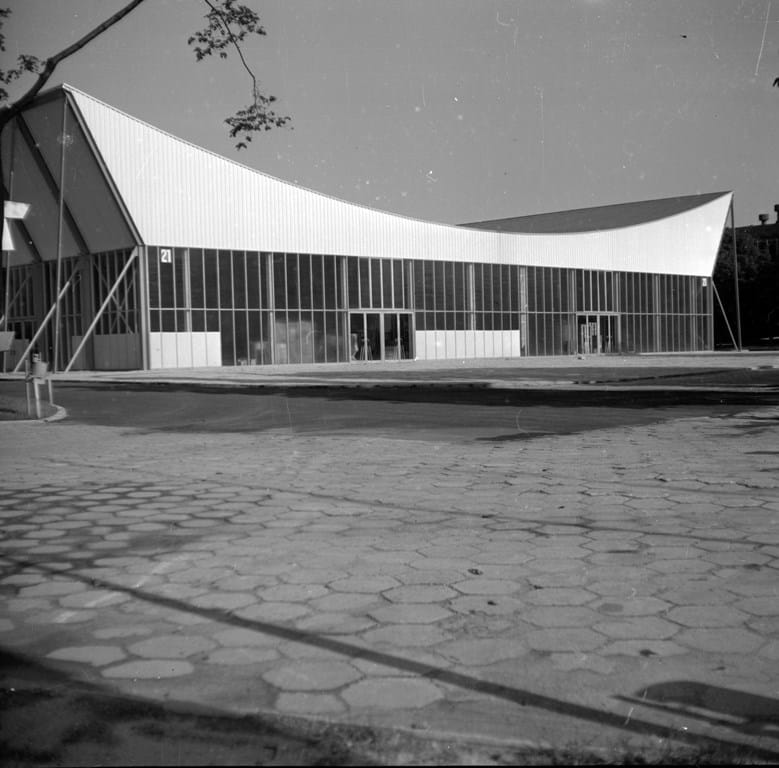
The "four-pack" consists of four halls: 7, 7A, 8 and 8A, which were functionally connected as part of the modernization. Its oldest elements are pavilions 7 (designed by Henryk Jarosz, Jerzy Liśniewicz and Jan Wellenger) and 8 (designed by Zygmunt Lutomski), built in 1958. Pavilion 7A from 1965 is a former pavilion of the Federal Republic of Germany designed by architects from across the western border. It is distinguished by a self-supporting roof. Until 2013, a part of the "four-pack" was also the "Swiss pavilion" (based on the design of the City Designers' Office) from 1977. However, the building was demolished due to too low interiors and the inability to build multi-storey stands. In its place, a new Pavilion 8A has been erected, from which you can get to the Congress Center and the Earth Hall.
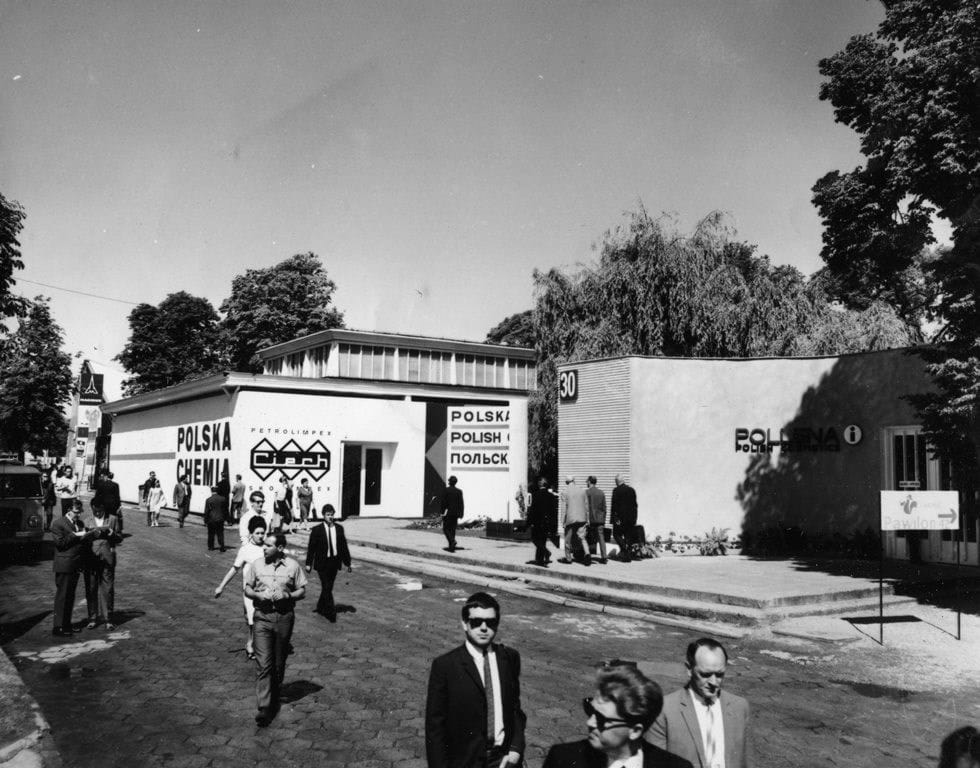
After the reconstruction in 2008, the communication between the pavilions is provided by a glazed passage with linden alleys. The designers made sure that the linden trees did not suffer damage first during the reconstruction of the complex, and then that they had the best possible conditions - e.g. special irrigation systems. The "Four Pack" meets the most sophisticated exhibition requirements. It is used as a conference and exhibition place, as well as a representative place, where various ceremonial events take place. It was here in 2008 that the climate conference of the United Nations (UN) - COP 14 was held. In turn, in 2020, a temporary hospital was organized here in connection with the COVID-19 pandemic. , drug warehouses, main medical warehouse,sanitary facilities for patients and rooms for medical and social services of the hospital.
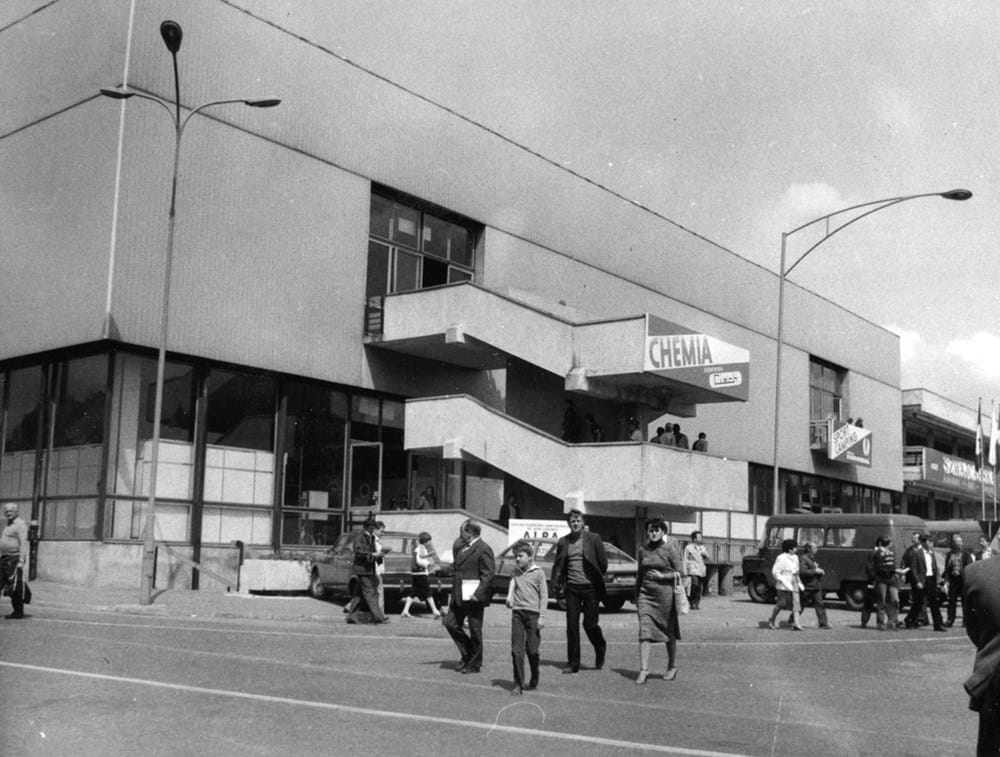
POZNAN CONGRESS CENTER
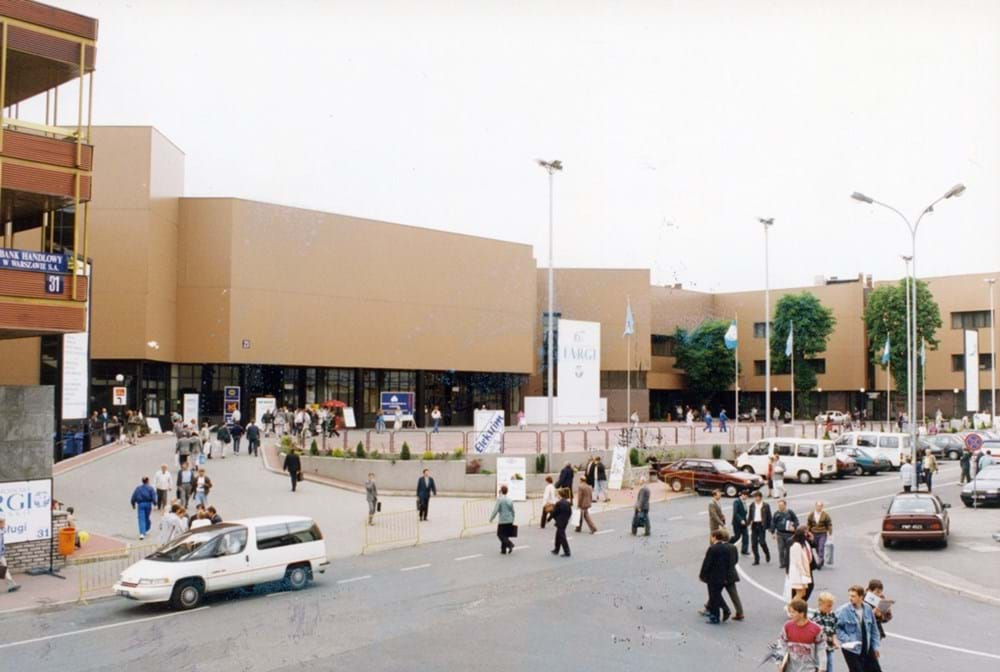
Authors of the project: Poznańskie Biuro Projektów Budownictwa Przemysłowego
Year of construction: 1994
A modern congress, exhibition and entertainment center. The PCC pavilion in its original form was built in 1994. The architectural concept, technical and economic assumptions and a multi-disciplinary technical design of the facility were made by a team of designers from the Poznań Industrial Construction Design Office, headed by arch. Wojciech Tkaczyk. In 1994, the pavilion received the 1st degree award of the Minister of Spatial Economy and Construction in the field of architecture and construction, for outstanding creative achievements. The varied topography reduces its enormous volume. The area of PCC is more than twice as large as the characteristic red skyscraper - Collegium Altum of the University of Economics, dominant in the center of Poznań.
After the modernization according to the design of the ADS Studio, completed in 2012, the pavilion was raised by 4 meters, and inside the most modern congress hall in Poland for 2,000 people was built - the Earth Hall. PCC enables the organization of both small events and international conferences for over 11,000 people. Inside, there are several dozen conference rooms at the disposal of customers. In addition, there is the Garden City restaurant complex, serving both fair and congress events, as well as individual clients.
It was at PCC in 2016 that the first National Assembly outside Warsaw took place, i.e. the plenary session of both houses of the Polish parliament, organized in connection with the celebration of the 1050th anniversary of the Baptism of Poland. The event was attended by, among others: President Andrzej Duda, members of the Council of Ministers headed by Prime Minister Beata Szydło, members of the Polish Episcopal Conference chaired by the Archbishop of Poznań. Stanisław Gądecki and representatives of the European Parliament and the diplomatic corps. PCC also held, among others, a women's congress, a local government congress and the Western Balkans Summit with the participation of EU leaders, heads of state, ministers of internal affairs, foreign affairs and the economy.
PAVILION 1
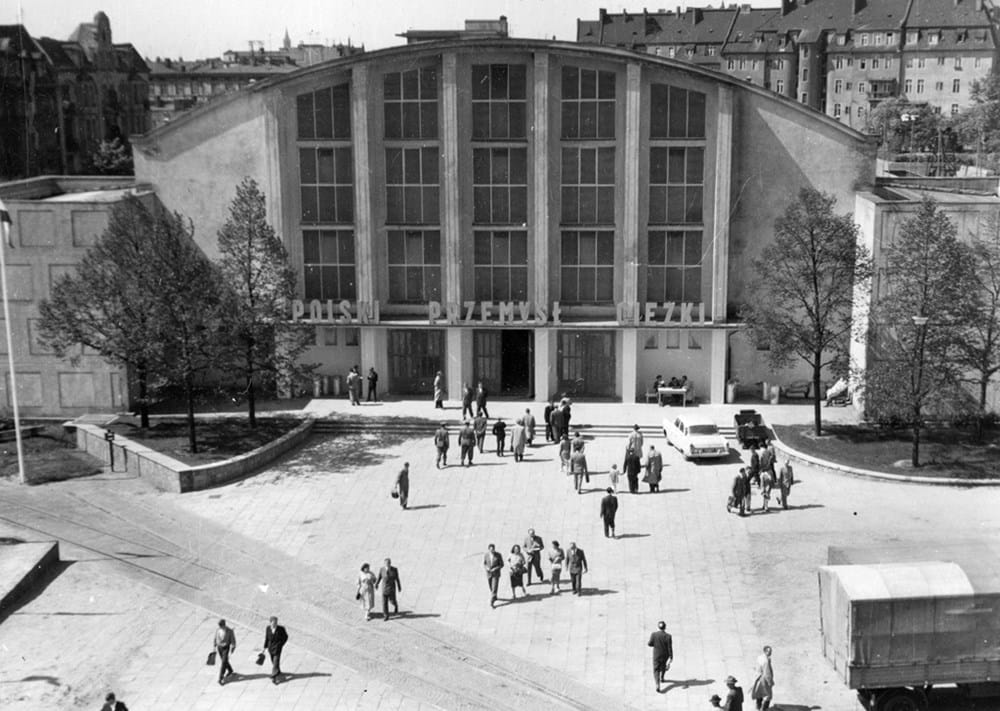
Authors of the design: arch. Stanisław Kirkin and Lucjan Ballenstedt.
Year of construction: 1947-1948
When the reconstruction of the Poznań International Fair began after World War II, most of the halls were destroyed in 80 percent. The City Board together with the Reconstruction Department, headed by Arch. Stanisław Kirkin, decided to expand the area of the Poznań International Fair. The lands on which the cemeteries destroyed by the German invader were located were added: the necropolises of the parish of St. Martin and St. Mary Magdalene (parish cemetery) and the Jewish cemetery (from Głogowska Street). In the place of the latter, the Industrial Hall, i.e. Pavilion No. 1, was erected. As the name suggests, exhibits of the Polish heavy and machine industry were presented inside.
It was the first exhibition hall built after the war. It was erected in a traditional way - using bricks, concrete and steel. It took a year and a half. A railway siding has been connected to the hall from the Poznań Główny station, intended for the transport of heavy and large-size exhibits. At the time of its commissioning, it was the most modern fair facility.
The hall has 8,937 m2 of usable space, and its cubature is 70,931 m3. It has three aisles, the main of which is 32 meters wide - until 1995 no other trade fair building exceeded this span. It was obtained without supports, thanks to semi-elliptical steel arches mounted on the walls of the mezzanine. The side aisles of the hall are 10 meters wide. The nave on the side of Głogowska Street - as in the case of Pavilion No. 2 - is intended for service and commercial purposes.
Currently, the pavilion hosts trade fairs, corporate events and concerts. Theatrical performances as part of the Malta Festival were held here. In 2014, the PWK Konkurencyjna Polska exhibition was organized in the hall. The facility is also made available for the implementation of commercial projects.
PAVILION 2 - Heavy Industry Hall
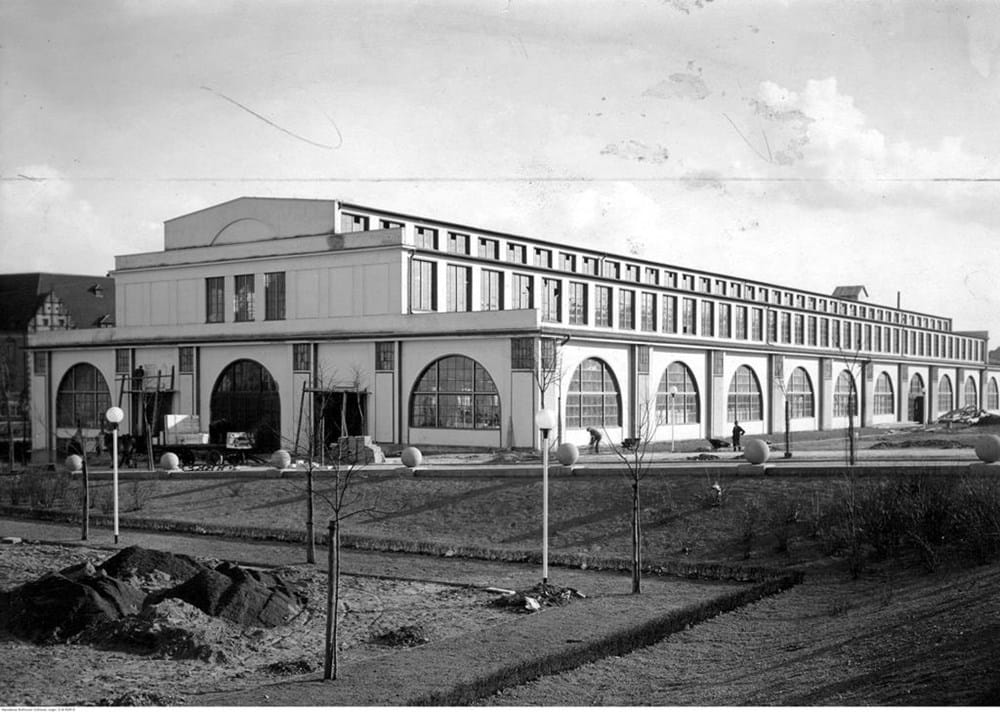
Author of the design: arch. Roger Sławski
Year of construction: 1928-1929, reconstruction. 1946-1947
The building was erected in the years 1928-1929 for the General National Exhibition, during which it served as the Heavy Industry Hall. It was designed by the chief architect of Pewuka - Roger Sławski. According to the original design, the hall was to be even larger and had a monumental tower. Cost-saving considerations and the planned smaller number of exhibitors led to the correction of plans and the construction of a smaller pavilion. Finally, a 130-meter long reinforced concrete hall was built, with a cascading roof and windows on three levels. The roof structure, innovative for those years, consisted of wooden trusses. A completely innovative way of covering the building was used here - a pioneering, three-hinged expanding frame was used, on which the gable roof of the nave was mounted.Large semicircular windows in the side walls and windows in the upper storey provided very good lighting during the day. The pavilion is decorated with two reliefs symbolizing mechanics and industry. Intensive colors were used inside, while on the outside, subdued colors. There were two railroad tracks that were used to deliver exhibits through the hall. An overhead crane was also installed for their unloading. The hall, destroyed during World War II, was rebuilt in 1946-47 according to the design of Stanisław Kirkin and Lucjan Ballenstedt, with the roof changed and without decorations. At that time, the double, external elevation of the central nave was abandoned in favor of only one brick superstructure with a gentle, gable roof.Intensive colors were used inside, while on the outside, subdued colors. Two railroads, which were used to deliver exhibits, ran through the hall. An overhead crane was also installed for their unloading. The hall, destroyed during World War II, was rebuilt in 1946-47 according to the design of Stanisław Kirkin and Lucjan Ballenstedt, with the roof changed and without decorations. At that time, the double, external elevation of the central nave was abandoned in favor of only one brick superstructure with a gentle, gable roof.Intensive colors were used inside, while on the outside, subdued colors. Two railroads were used to deliver exhibits through the hall. An overhead crane was also installed for their unloading. The hall, destroyed during World War II, was rebuilt in 1946-47 according to the design of Stanisław Kirkin and Lucjan Ballenstedt, with the roof changed and without decorations. At that time, the double, external elevation of the central nave was abandoned in favor of only one brick superstructure with a gentle, gable roof.already with a changed roof and stripped of decorations. At that time, the double, external elevation of the central nave was abandoned in favor of only one brick superstructure with a gentle, gable roof.already with a changed roof and stripped of decorations. At that time, the double, external elevation of the central nave was abandoned in favor of only one brick superstructure with a gentle, gable roof.
After the reconstruction, only the central part of the hall and the mezzanines are used for exhibition purposes. The side aisle on the side of Głogowska Street is intended for service and commercial premises. The second aisle houses the utility facilities of the fair and the archive.
Currently, the hall, apart from exhibitions, serves, among others, for cultural purposes: concerts and shows are held here regularly, the Automotive Museum was temporarily here. On the occasion of the revalorization of the square's space and the creation of a Cultural Station at the Fair, restaurants and service points will be created here.
PAVILION 12 - Trade Fair Palace
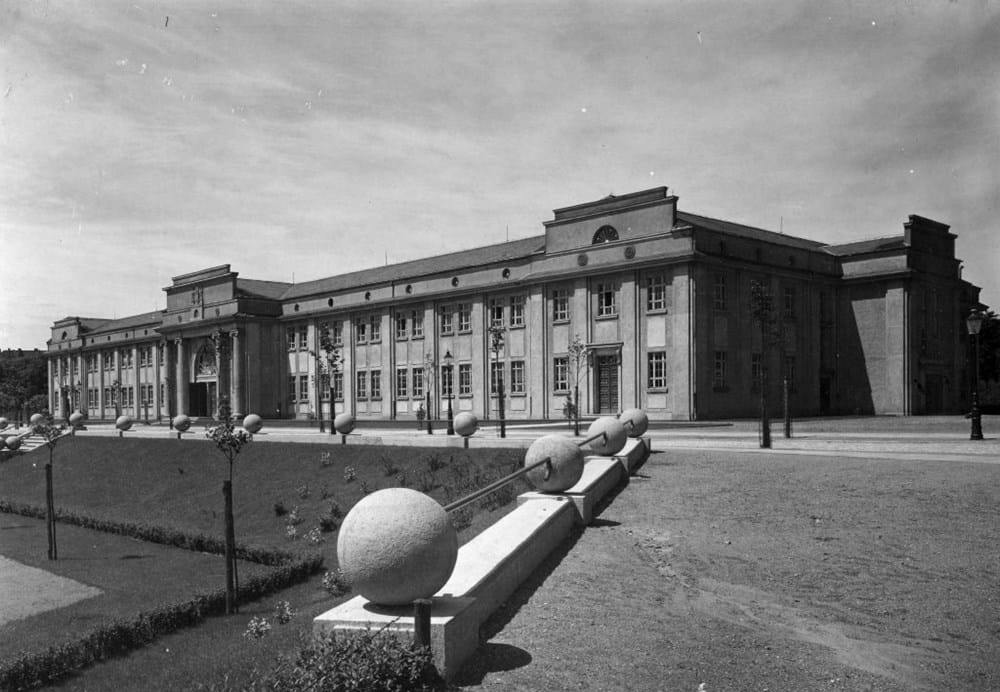
Author of the design: architect Stefan Cybichowski
Year of construction: 1924-1925
The first Poznań Fair was held at the turn of May and June 1921. Year by year the event was developing and the demand for new pavilions was growing. In 1923, the City Board bought the land around the Upper Silesian Tower. A year later, a competition was announced to arrange this space. It was won by arch. Stefan Cybichowski, who designed Pavilion 12, known as the Trade Fair Palace, and the neighboring Administration Building. They were built at the 5th Poznań Fair (the first international one) in 1925. A two-story pavilion with monumental, classical architecture, topped with an attic with an area of over 8,000 sq. M. m2 was built at an express pace - in just six months. Construction began on October 20, 1924 and was completed on May 1, 1925. The work was interrupted only for seven days during the greatest frost.The construction of the pavilion made of brick, reinforced concrete columns and beams was topped with a metal and glass roof, which provided beautiful overhead lighting. The coat of arms of Poznań is placed above the entrance surrounded by four Ionic columns. Inside the palace, there were two rooms, which were lit by a skylight. It was surrounded by a gallery with arcades with a decorative balustrade, supported by pillars decorated at the top with Ionic capitals.
The building became part of the new spatial arrangement and set the compositional framework for the General National Exhibition, during which it served as the Metal Industry Pavilion - various types of machines in motion were presented here, including modern steam boilers, locomobiles and carriages from the H. Cegielski factory.
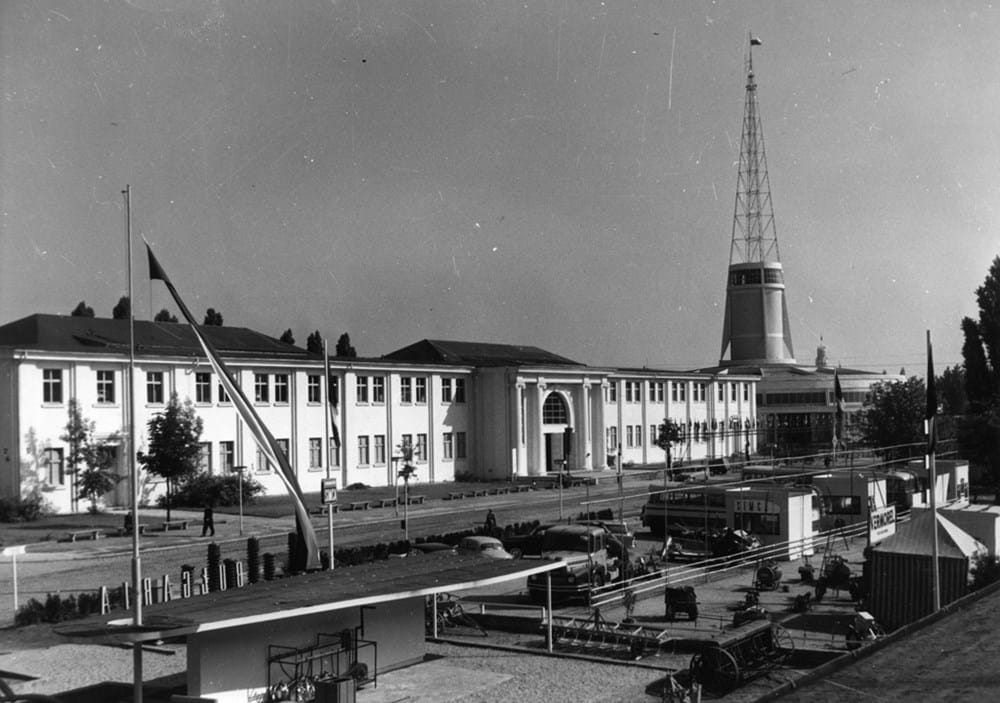
During World War II, the building was severely damaged. The sloping roof, attic and decorations, including the coat of arms of the city, have never been rebuilt. In 1945, the pavilion was turned into a furniture and household appliances store. Applications for their allocation could be submitted to the Municipal Board.
It currently serves as a warehouse. The building will gain a new function on the occasion of the revalorization of the square space and the creation of Cultural Stations at the Poznań International Fair.
ADMINISTRATIVE BUILDING - Belweder
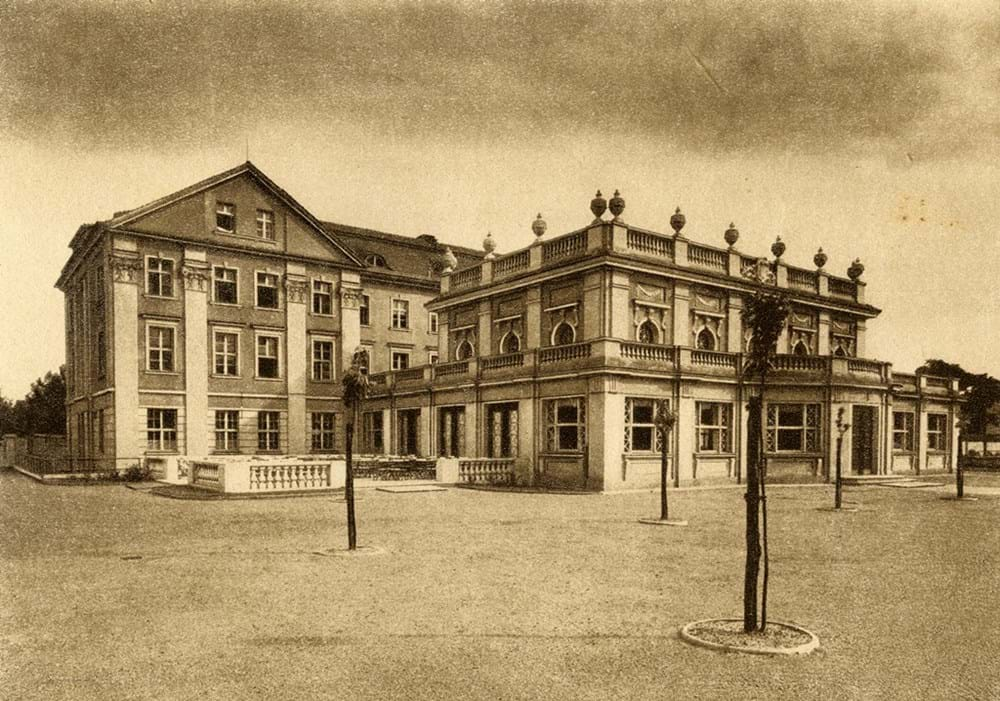
Author of the design: arch. Stefan Cybichowski
Year of construction: 1924-1925
This is one of the two facilities (the other is Pavilion 12 - the Trade Fair Palace) on the premises of the Poznań International Fair with a palace character. They close the viewing axis to the fairgrounds from the West Railway Station. The three-story neo-baroque building consists of two parts. The main body was allocated to the administration of the fair. In the second part, located at the back of the Belvedere Palace, there was a restaurant and cafe for years, with a very rich interior design. The Belweder banquet hall - the largest and most modern in the city - was then considered the most exclusive place in Poznań. The restaurant and café were able to accommodate up to 2,000 people in the hall and in the gardens. Elegant balls were organized in the restaurant, where the cream of Poznań's social party would play until dawn, as well as fancy parties.One of them - the election rally of the National Party on November 23, 1933 - ended in a huge brawl. It started with the throwing of chairs by the opponents of the National Democratic Party, and ended with people escaping through windows and doors and with hand-to-hand combat with brass knuckles and walking sticks. 19 people were injured.
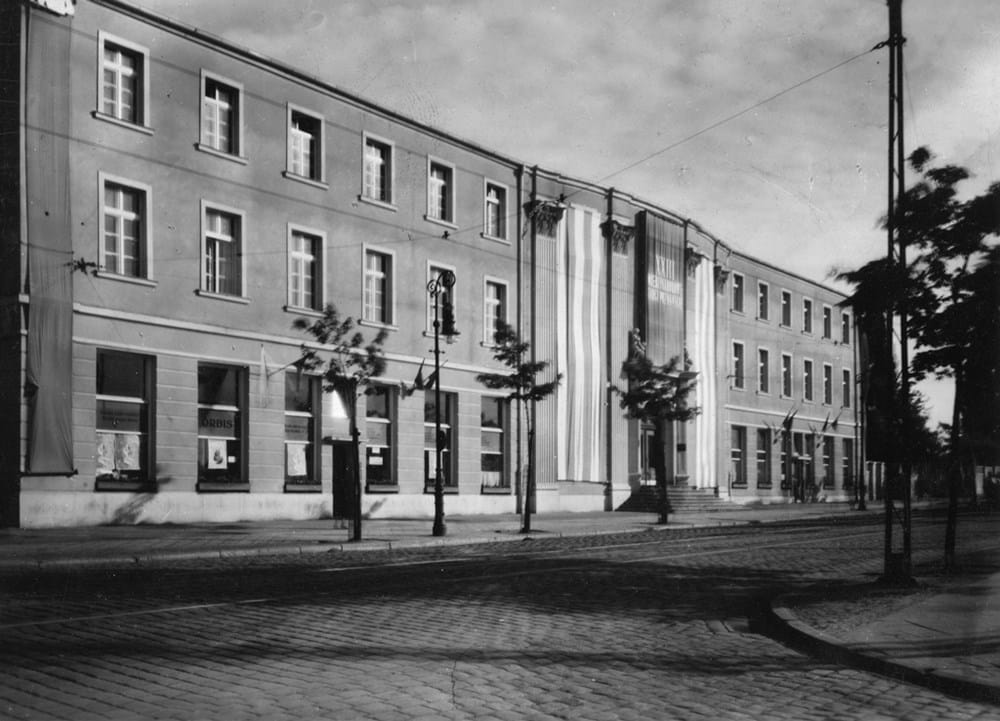
From 1930, the City Museum was located in the main part of the building. After the destruction of the war, the Administration Building was rebuilt in a simplified form - without decorations and with a flat roof.
In 1957, the first Poznań TV studio was established in Belweder. To arrange them, the windows were bricked up. The first program was watched on only 100 receivers registered in the city. The gastronomic function was taken over by the adjacent Adria restaurant, launched in the same year.
During the Polish People's Republic, at the top of the Administration Building there was a neon sign with the words "WELCOME TO POZNAN", which was seen by all travelers leaving the Western Railway Station. Currently, the building houses administration offices and technical departments of Międzynarodowe Targi Poznańskie.
EAST ENTRANCE
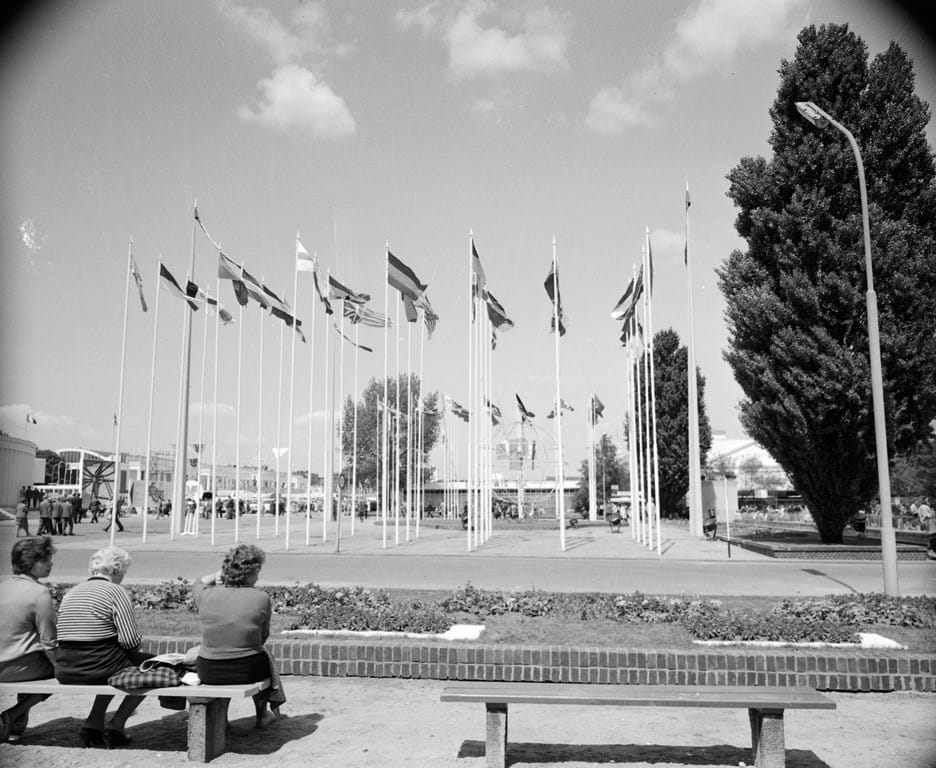
Author of the project: ADS Studio
Built in: 2003
A pavilion in the form of a vestibule, located in the eastern part of Poznań International Fair, on the axis of the Dworcowy Bridge. This is where the entrance to the fair has always been located, but until 2003, visitors had to queue at the ticket offices - often very long - under the open sky.
The entrance was designated here during the East German Exhibition organized in 1911, which "indicated" the location of the Poznań International Fair. In 1926, two pylons topped with spheres designed by Adolf Berezowski were erected here, under which cash desks were arranged in square arcades. However, they did not survive the Second World War.
Until the 1950s, the entrance led at the Upper Silesian Tower, later a characteristic Spire was built on its skeleton. In front of it, there was the Masztowy Square, where the flags of the countries from which the exhibitors came were waved in alphabetical order (the names of the countries in English are considered binding). In the middle of the square there was a characteristic structure of an openwork model of the globe with the letter "P" in the center illuminated with a neon sign - also known as a "globe". For years, at the eastern entrance, there was a booth of the Civic Militia "on a chicken's foot".
The construction of the "aquarium", as the present eastern entrance is called, started in 2001. To keep the Spire visible, the façade was made of a special multi-layer glass reinforced with foil. First, a steel structure was erected, which was called a "beater" among MTP employees. Then the sphere with the trade fair logo underneath it was dismantled and the glass façade was put in place.
In the Lobby there are, among others ticket offices and fair information points, two modern conference rooms and a spacious mezzanine.
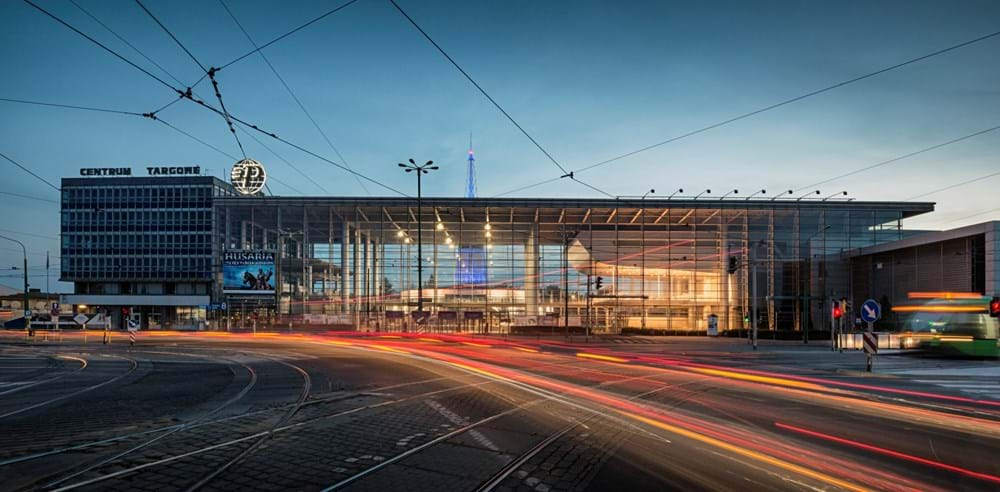
The current entrance was connected to the building of the Trade Fair Center, which was opened in 1973. It was there, in the conference room, that Lech Wałęsa delivered the famous slogan: "Poland will be the second Japan". Next door was the cult restaurant "Adria", where the band Iron Maiden gave a concert at a wedding in 1984. The premises existed until 2003.
PAVILION 11 - Upper Silesian Tower, Spire
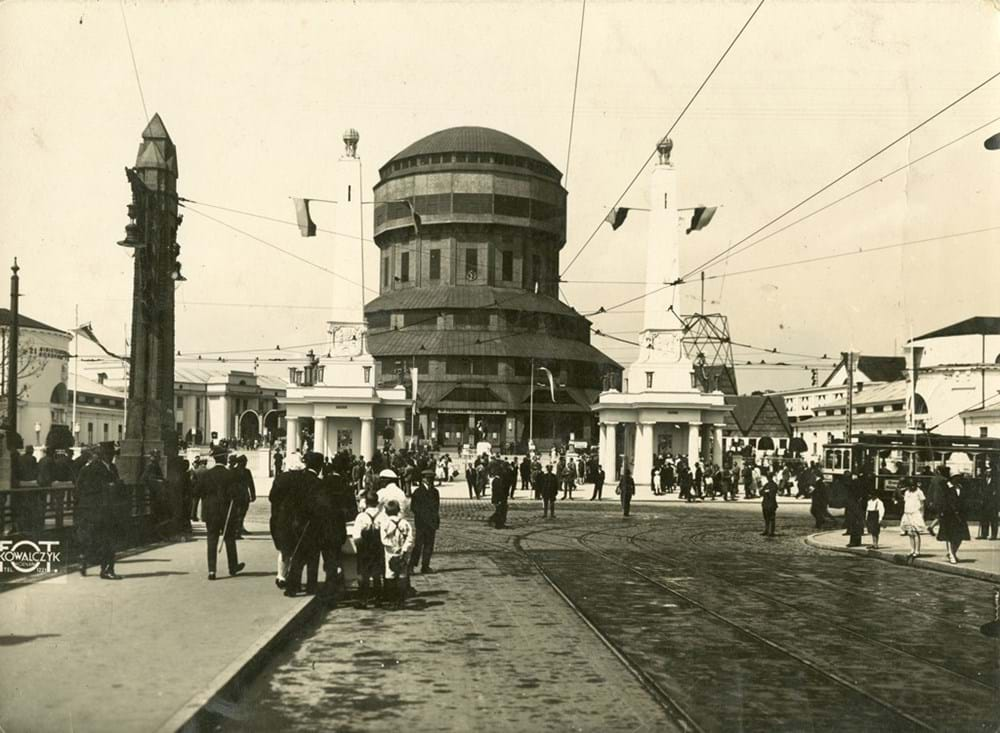
Author of the design: arch. Bolesław Szmidt
Year of construction: 1954-1955
The 70 m high "Spire" is an unquestionable symbol of the Fair and one of the objects permanently associated with Poznań.
The facility was built for the first Poznań International Fair after a five-year break. A year later, at the top of the rocket-like pavilion, the French installed a huge TV antenna and began broadcasting the first experimental programs in Poznań. The television equipment was bought by the voivodeship authorities, which gave rise to the Poznań television.
The pavilion was built on the skeleton of another outstanding object - the Upper Silesian Tower, built for the East German Exhibition in 1911. The author of the project was Hans Poelzig, who designed a café with a panoramic view of the city for the duration of the event. Inside the tower there is an elevator and at its top a powerful floodlight with the power of 61 million candles. After the exhibition, a huge, the largest in Germany, water reservoir with a capacity of 4,000 m3 was installed at the top of the building. It supplied Łazarz and Jeżyce with water. From that moment on, the tower performed two innovative functions: exhibition and water tower. Architecture experts considered the building a work of art, and it also became an inspiration for filmmakers - the German set designer Erich Kettelhunt, who designed skyscrapers for the 1927 movie "Metropolis".directed by Fritz Lang, he located the seat of the industrial magnate John Fredersen in a similar tower. Later on, the frames from the film were used by Queen in their music video for the song "Radio Ga Ga".
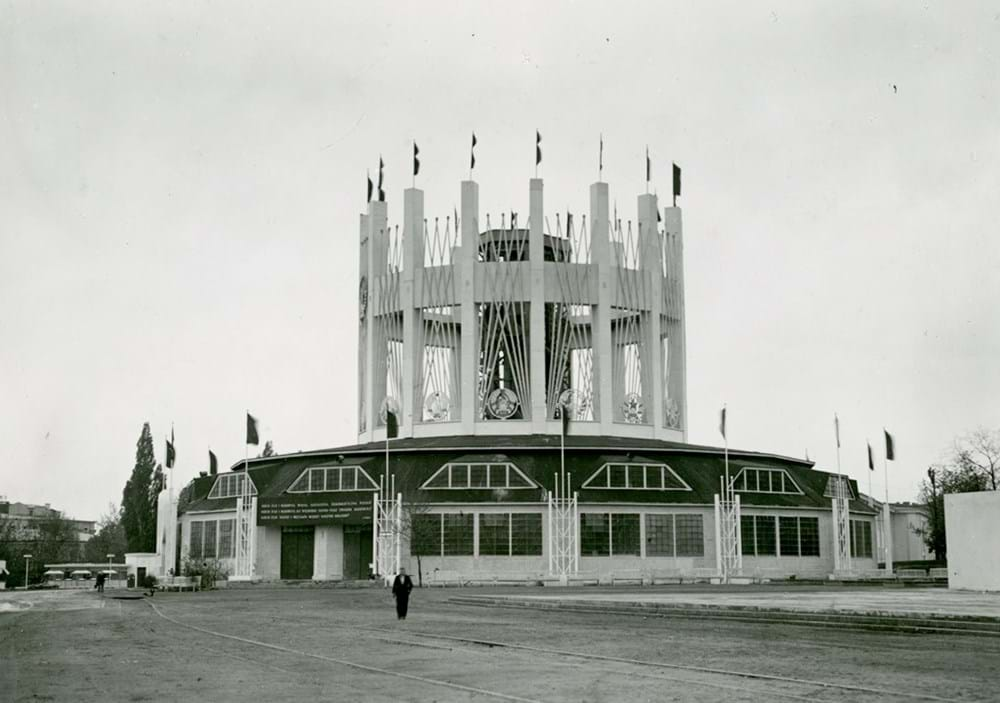
Before the General National Exhibition, the iron structure of the tower was painted red and blue. It was damaged during the bombings during World War II, but its lower tier with an openwork crown instead of a tank was preserved until the mid-1950s. The Soviet Union exhibited its exhibits there at the first post-war Poznań International Fair. The fate of the Upper Silesian Tower could have been crossed by the planned road connecting the Dworcowy bridge with Konopnicka Street. Ultimately, the plans were abandoned. In the years 1954-55, arch. Bolesław Szmidt gave the hall its present architectural shape with a characteristic slender spire. At the beginning of the 21st century, the pavilion was thoroughly modernized and the original riveted structure of the Upper Silesian Tower was unveiled inside.
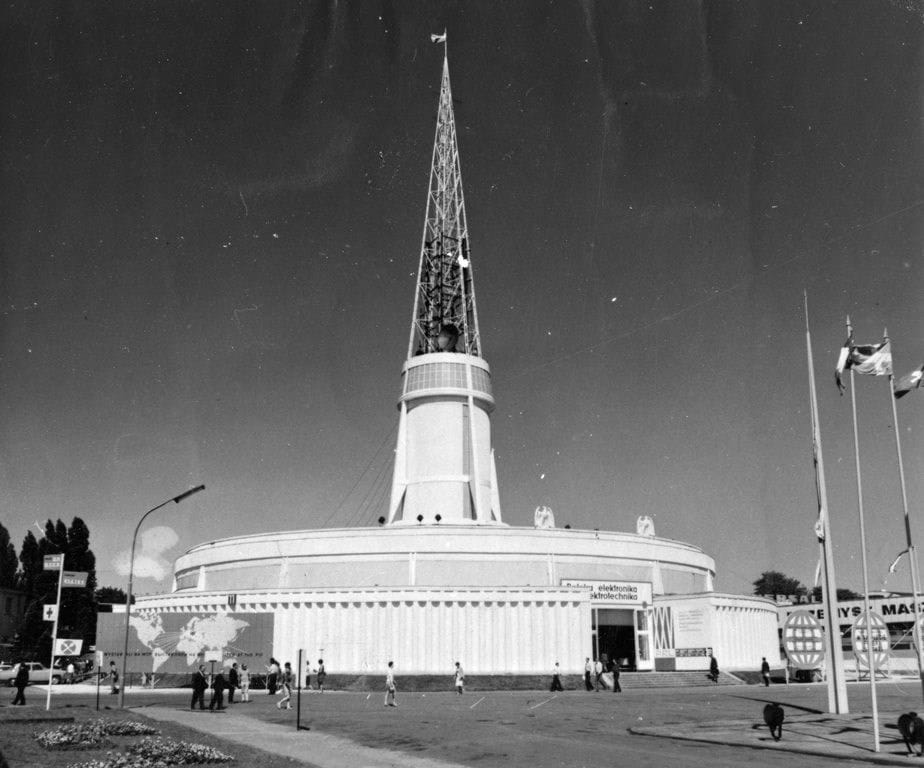
According to experts, through its architecture, the facility combines Poznań's fair traditions and exhibition continuity, as well as the willingness to change and promote new values carried by the present day.
